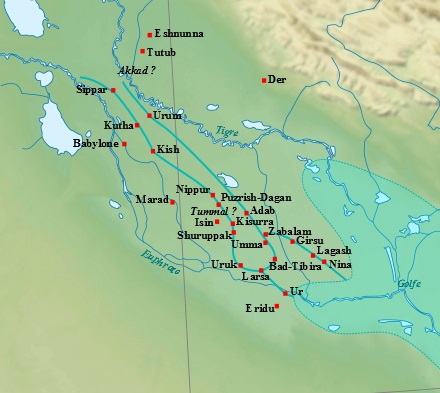Sumerians are known as the founders of the urban civilization that dominated in southern Mesopotamia in the 4th and 3rd millennia BC. They developed a network of irrigation channels that made it possible to cultivate cereals in desert areas of the Lower Euphrates, introduced an ideographic script, initially pictographic and then simplified to the form of cuneiform characters impressed in wet clay, built the biggest cities in the world at that time, with monumental temples and enormous palaces.

Near_East_topographic_map-blank.svg: Sémhur(published under CC BY-SA 3.0, via Wikimedia Commons)
Continue reading “1739 BC – year when the Sumerian civilization collapsed”
